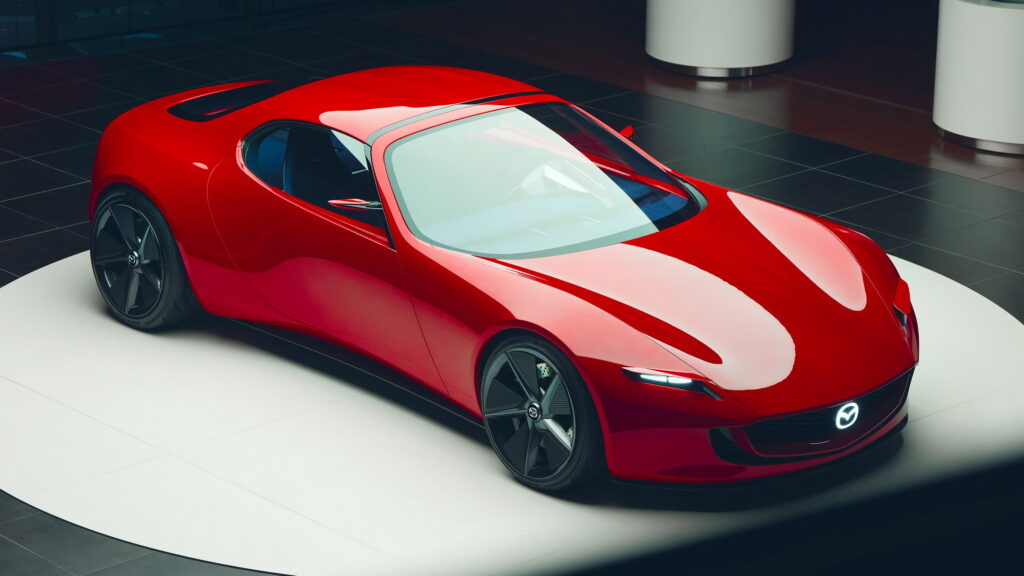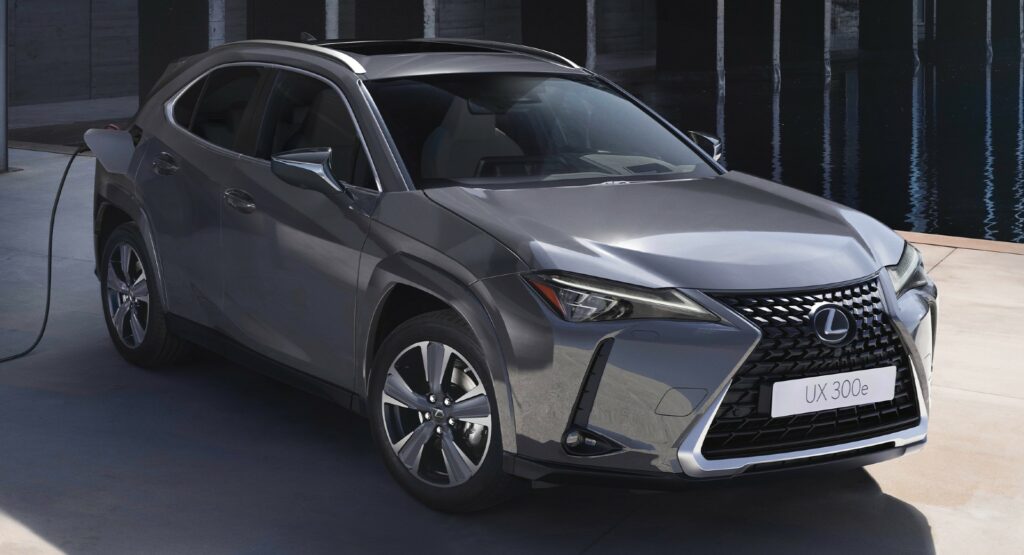We Drove Volvo’s Flagship XC90 And EX90 And Only One Impressed Us Most: Review
Volvo has adjusted course on its electrification strategy, choosing not to go EV-only but instead continuing to offer updated versions of its combustion-powered models alongside their electric counterparts. The first to illustrate this dual-track approach is the 90 series, where the facelifted XC90 joins the all-new EX90. At a recent local test drive event, we had the chance to experience both SUVs side by side, taking each for a spin to see how they compare.
The EX90 was originally introduced in late 2022, but production didn’t start until mid-2024 due to supply issues and lingering software bugs. On the other hand, the second-generation XC90, originally debuted in 2014, received a mild refresh in 2019, and has just been treated to a more thorough update in 2024.
More: Volvo’s Reborn XC70 Is For The EV Skeptics
The two Swedish SUVs have similar footprints with three rows of seats. However, they ride on different underpinnings, as the XC90 retains the original SPA (Scalable Product Architecture) platform, while the EX90 utilizes the much newer SPA 2 architecture. More importantly, the XC90 offers mild-hybrid and plug-in hybrid powertrain options, while the EX90 is exclusively available in fully electric form.
QUICK SPECS
| Volvo EX90 Twin Motor Performance | Volvo XC90 T8 PHEV AWD | |
| Powertrain | Electric | Plug-in Hybrid |
| Power | 510 hp (380 kW / 517 PS) | 449 hp (335 kW / 455 PS) |
| Torque | 910 Nm (671 lb-ft) | 709 Nm (523 lb-ft) |
| 0-62 mph (0-100 km/h) | 4.9″ | 5.4″ |
| Top Speed | 180 km/h (112 mph) | 180 km/h (112 mph) |
| Battery | 111 kWh | 18.8 kWh |
| EV Range (WLTP) | 614 km (382 miles) | 71 km (44 miles) |
| Platform | SPA 2 | SPA |
| Length | 5,037 mm (198.3 inches) | 4,953 mm (195 inches) |
| Width | 1,964 mm (77.3 inches) | 1,958 mm (77.1 inches) |
| Height | 1,747 mm (68.8 inches) | 1,771 mm (69.7 inches) |
| Wheelbase | 2,985 mm (117.5 inches) | 2,984 mm (117.5 inches) |
| Boot (behind 2nd row) | 662 lt (23.4 cubic feet) | 668 lt (23.6 cubic feet) |
| Price (GR) | €117,986 ($135,400) | €104,709 ($120,100) |
| Price (US) | $86,290 | $74,295 |
With the specifications laid out, the question becomes how these SUVs measure up in design, cabin quality, and on-road character.
Mirror, Mirror on the Wall, Who’s the Fairest of Them All?
Both models cut an imposing figure on the road, though the EX90 stretches a little longer with its extended rear overhang. The XC90’s 2024 facelift, particularly its redesigned front fascia, succeeds in giving the veteran SUV a fresher appearance without altering the bulk of its bodywork.
The XC90’s grille features a distinctive pattern that immediately sets it apart from the EX90’s minimalist, closed-off face. I personally prefer the look of the XC90’s slimmer LED headlights with Thor’s hammer graphics over the EX90’s pixel-style DRLs with the overly complex split-opening theatrics. As for the faux side intakes of the XC90, in my opinion it wouldn’t hurt if they were smaller as they serve no real purpose.
More: Volvo ES90 Takes On BMW i5 With More Style And Range
From the side, the EX90 asserts its modernity with a clamshell hood, sharper dynamic lines, and flared fenders that integrate more seamlessly into the body. The same applies to the futuristic design of the 22-inch wheels that edge out the classy but conservative looks of the XC90’s 21-inch alloys.
The rear end is probably the weakest point of the XC90, with the EX90 looking one generation ahead. Don’t get me wrong – I always liked the aristocratic elegance of the big ICE-powered Volvo SUV but its tail has remained the same over the past decade and it can no longer hide its age. Having said that, I’m not a huge fan of the split taillight arrangement of the EX90 with extra LEDs flanking the rear glass.
Minimalism Over Perceived Quality
Moving inside, the EX90 bets on minimalism, while the XC90 does a better job in the perceived quality with bigger chunks of fabric and wood inserts on the dashboard. The floating center console of the EV has more space for storage and a cool little case for the key, but I still prefer the more traditional setup of the XC90 with the crystal-like shifter.
In terms of tech, the XC90 has recently gained a 11.2 inch infotainment display and a 12.3-inch digital instrument cluster. The EX90 has a bigger and more commanding 14.5-inch touchscreen that’s joined by a smaller but easier to read 9-inch instrument cluster.
More: This New Seatbelt Reacts To Your Body Before A Crash Even Happens
The Google-powered infotainment software with crisp graphics is shared between the two, although the absence of physical buttons and shortcuts is a bit more frustrating in the EV. Overall, I didn’t like the fact I was several clicks away from accessing the selectable driving modes, but at least the climate controls are always visible on the lower end of the screen.
Predictably, the cabins of the SUVs feel similarly spacious. According to the spec sheets, the XC90 has slightly less headroom than the EX90, although it does have a touch of extra hip room on the third row. The boot is nearly identical, with 662 lt (23.4 cubic feet) for the EX90 and 668 lt (23.6 cubic feet) for the XC90 (both measured with the third-row seats folded). The seats are superb in both models, offering great levels of comfort and support for various body types.
Staying loyal to Volvo’s safety fixation (and reputation), both models come with sophisticated ADAS suites and a limited top speed of 180 km/h (112 mph). However, only the EX90 has a roof-mounted LiDAR, with the XC90 still relying on radar and camera sensors.
The Driving Experience is the Decisive Factor
My drive started with the XC90, as I wanted to see if it would still impress me as much as its predecessor did when I first drove it many years ago. It most recently did. The ride is smooth, the cabin is serene, and it still feels like an excellent long-distance cruiser.
Predictably, the XC90 still feels like a big and heavy SUV when you push it in the corners, with a healthy amount of body roll despite the efforts of the self-leveling air suspension. With a combined output of 449 hp (335 kW / 455 PS) from its plug-in hybrid powertrain, the SUV is no slouch, but it’s clearly more geared towards comfort than outright performance.
More: Volvo Doesn’t Need Wagons Anymore, Says SUVs Are The Future
The EX90, on the other hand, feels like a step into the future. You immediately feel the difference the newer chassis makes in ride quality, combined with the more sophisticated dual-chamber air suspension. In Comfort mode, it glides over bumps, while Performance mode tightens it up reducing body roll. Furthermore, the steering of the EV feels quicker and more direct, doing a better job in disguising its heavyweight nature.
The EX90 we drove came fitted with the Performance powertrain which is a $5,000 option in the US. This dials up the combined output of the dual electric motors to 510 hp (380 kW / 517 PS) from the standard 397 hp (296 kW / 402 PS). Overall, the half-second advantage over the PHEV in the 0-100 km/h (0-62 mph) sprint might not sound that big on paper, but the instant torque delivery and overall responsiveness make the EV feel significantly quicker on the road.
Final Thoughts
After spending a limited amount of time with Volvo’s two flagship SUVs, I reached two clear conclusions. The facelifted XC90 remains a strong contender in the segment, with welcome improvements in the design and ride quality. However, when driven back-to-back with the fully electric EX90, it’s clear the latter takes the lead in performance, comfort, and driving dynamics. Volvo was right to keep the ICE-powered XC90 in the lineup with thoughtful updates, but for those open to an electric-only option, the newer EX90 makes the more compelling case – even with a higher price tag.





















